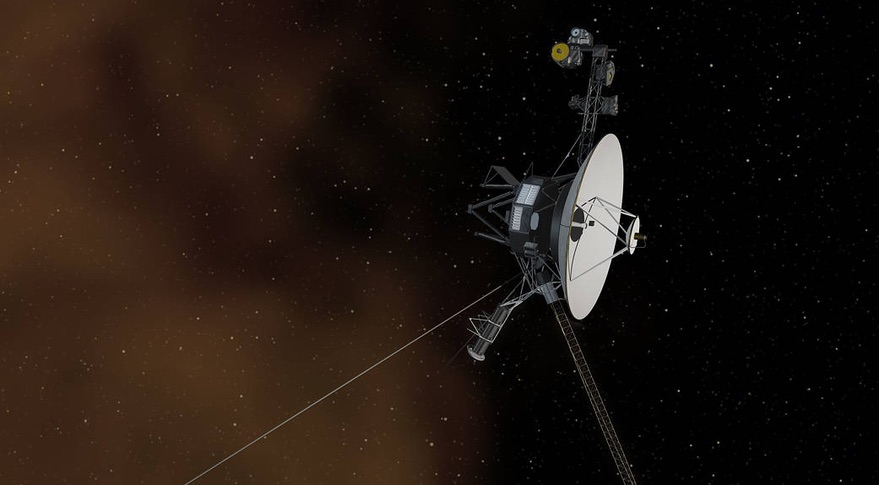
WASHINGTON — As NASA’s Voyager 2 spacecraft enters interstellar space, project officials have high hopes that it and its twin spacecraft will continue to operate for as long as a decade.
NASA announced Dec. 10 that Voyager 2 passed what is known as the heliopause, the boundary between where the solar wind from the sun dominates and where the interstellar medium is dominant. That crossing, around Nov. 5, was detected by Voyager 2 in the form of a sharp drop in solar wind particles and corresponding increase in galactic cosmic rays detected by the spacecraft’s instruments.
The discovery, announced at the Fall Meeting of the American Geophysical Union here, comes six years after Voyager 1 also crossed the heliopause into interstellar space.
“This is a very exciting time again in Voyager’s 41-year journey,” said Ed Stone, Voyager project scientist at Caltech and former director of the Jet Propulsion Laboratory, during a press conference announcing the discovery.
The signature of the heliopause crossing from Voyager 2 is not quite the same as Voyager 1, Stone noted. “That’s what makes it interesting,” he said. “We’re in a different place — one is in the northern hemisphere and the other is in the southern hemisphere — and it’s a different time in the solar cycle. We would have been amazed if it looked the same.”
With both Voyager 1 and Voyager 2 beyond the heliopause, scientists are eager to combine those measurements with those from spacecraft and instruments within the sun’s heliosphere. “I’ve been studying galactic cosmic rays for many years from within our heliosphere,” said Georgia Denolfo, a space scientist at NASA’s Goddard Space Flight Center, at the press conference. “So it’s especially exciting to be able to think that we will be having a mission in the very same space that I have been studying, and many others, from afar.”
“I often get asked, ‘Is this it for Voyager?’” said Nicky Fox, director of the heliophysics division at NASA Headquarters. “Absolutely not. This is really for me the beginning of a new era of heliophysics science.”
Project officials are hopeful that this new era can last for several years, despite the age of the two Voyager spacecraft. Both were launched within weeks of each other in 1977 on missions to fly by Jupiter and Saturn. Voyager 2 also made flybys of Uranus and Neptune.
“Both spacecraft are very healthy, if you consider them senior citizens,” said Suzanne Dodd, Voyager project manager at JPL. “They are operating just fine.”
The spacecraft, powered by radioisotope thermoelectric generators (RTGs), are gradually losing power as their plutonium power sources decay. Dodd said the power produced by each spacecraft’s RTG is declining by about four watts per year, and the heat they generate that keeps the spacecraft warm is also declining.
Dodd said they’re closely watching the temperatures on Voyager 2, which are approaching the freezing point for its hydrazine fuel. “So we have to make a lot of trades, particularly with Voyager 2, between power and thermal,” she said.
As the power levels continue to decline, project officials will have to turn off some of the instruments on each spacecraft. “The difficult decisions are going to be made by Dr. Stone and the science team on which instruments to turn off first,” she said. “Those decisions will be made with getting the most science value back.”
Dodd said it’s possible for each spacecraft to continue operating for up to 10 more years. “My own personal goal would be to get these spacecraft to last 50 years” from their 1977 launch, she said. “If we get out to 2027, that will be a 50-year mission. I think that would be fantastic.”
Related
ncG1vNJzZmiroJawprrEsKpnm5%2BifLe72JqenqpdZ3qmutOeqaxlmaPBpr7SrZylpJGnerS8wJycaA%3D%3D